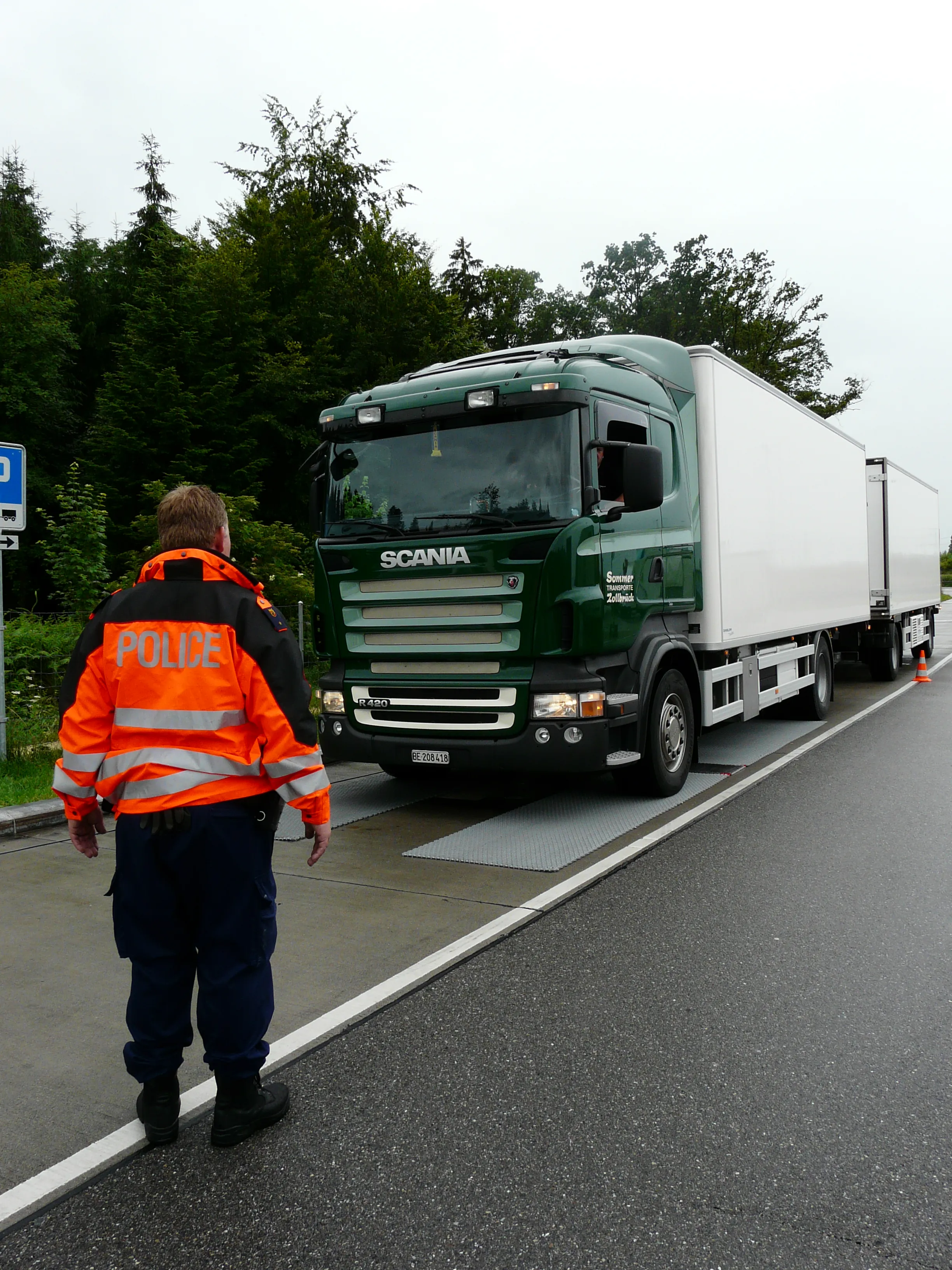Felix Scheuter, managing director at Haenni Instruments, the renowned Switzerland-based mobile scales manufacturer, gives World Highways his views on how best to ensure effective highway weight enforcement
The main danger for any road is its gradual destruction by overloaded heavy goods vehicles (HGVs). The more frequently such vehicles use a highway, the faster it is destroyed.
Mobile patrol teams using mobile weighing scales are a highly effective way to enforce weight limits aimed at protecting ro
September 26, 2013
Read time: 5 mins

Felix Scheuter, managing director at
Mobile patrol teams using mobile weighing scales are a highly effective way to enforce weight limits aimed at protecting roads.
From an economic viewpoint, the cost of effective weight enforcement patrols must be set against savings from a reduced need for road repairs and lower accident aftermath costs. Those responsible for choosing the right weight enforcement approach must also ensure fair competition between weight enforcement solution firms bidding for a solution-supply contract. A further consideration must be that a bad weight enforcement solution choice could lead to a greater number of accidents resulting in fatal or serious injury, as undetected overloaded vehicles increase the speed of a road’s deterioration.
The weight of HGVs may be measured in different ways. There are stationary scales like the conventional weigh bridge, or axle load scales working in static or in dynamic mode. Static means the vehicle must stand still while weighed.
In the dynamic mode, the vehicle is weighed in motion while it passes over the scale. Finally, there are dynamic weighing systems using a load sensitive strip across the lane. The axle weight is then calculated by analysing the response curve of the sensor.
As well as the stationary scales, there are wheel load scales. They are portable, of a size big enough to weigh a double wheel, and they are working in the static or dynamic mode or in both modes. Generally, these scales are used in pairs in order to weigh the vehicle axle by axle.
No answer can be given to which weighing system is best for weight enforcement without highlighting further issues.
In all western and in many other countries a weighing system’s type approval based on the OIML recommendations is mandatory. Other countries have got their own regulations. For static scales there are regulations in all countries. That means any static scale may obtain an approval provided that they are complying with the regulation. On the other hand, regulations for dynamic scales are non-existent in many countries or they are limited to stationary applications.
For long road sections without a detour option, a stationary scale could be the best solution. In all other cases, stationary scales will be bypassed by all overloaded vehicles because the drivers become familiar with these places and are alerted by colleagues when a scale is operating. Weight enforcement patrol teams using mobile scales is one solution. However, due to interaction between HGV drivers, an individual driver may simply stop to take a rest until the ‘coast is clear’. Despite this, using mobile scales only, while frequently changing deployment location, is probably the most effective method of policing weight enforcement regulations.
The big advantage of using mobile scale is that their accuracy is high, with only low tolerance deductions necessary [COST 323 proceedings; European Conference 1998: Evaluation of Factors Affecting WIM System Accuracy]. Furthermore, the driver never knows where he can be caught, so the perceived probability of being detected is greater. The investment in mobile scales is also very low compared to a stationary scale, and the mobile scales can be operated on a 24/7 basis with different shifts. In contrast, stationary scales usually are operated only a few hours per day, offering less value for money.
The benefits of mobile scales over static ones do not end there. In the result of failure, a mobile scale can be exchanged immediately. There are lower service and repair costs because the mobile scales can easily be shipped to a well-equipped and trained service station. Potential vandalism of the scales is also negated as mobile scales can always be accommodated in safe storage.
To complement enforcement through mobile scales, high speed weigh-in-motion systems (HS-WIM) installed at tactical locations can give weight enforcement patrols vital information on what day and time overloaded vehicles are likely to circulate. HS-WIM can also be used for pre-selection purposes and for detecting trucking companies overloading their vehicles systematically.
Other crucial criteria for ensuring effective weight enforcement on roads, is the height of the fine for offending HGV drivers and operators and the action taken following the identification of an overloaded vehicle. Low fines and no vehicle immobilisation fail to deter offending drivers and operator from continuing to overload their trucks. A high perceived probability of being detected combined with high fines is the most effective way to keep overloaded vehicle numbers down.
In view of this, vehicle immobilisation should only take place if an axle is overloaded and/or the total weight is beyond the limit given by the manufacturer.
For many years, attempts have been made to enforce road weight limits through HS-WIM systems only. In one respect, such a weighing is extremely efficient, but it is less effective compared to mobile weighing because of the potential detour problem mentioned earlier in this article. Additionally, such systems are extremely expensive because one sensor row is not enough to reach a reasonable accuracy. Even multi-sensor systems are affected by the deterioration of the road and thus by decreasing accuracy due to increased HGV oscillations. This is an invitation to appeal in court against a weighing offence, while a weighing on a certified mobile static wheel load is made by trained personnel under a controlled environment.
Also, an HS-WIM system used for weight enforcement cannot be used for statistics anymore because the results are spoiled by detour-taking vehicles.








